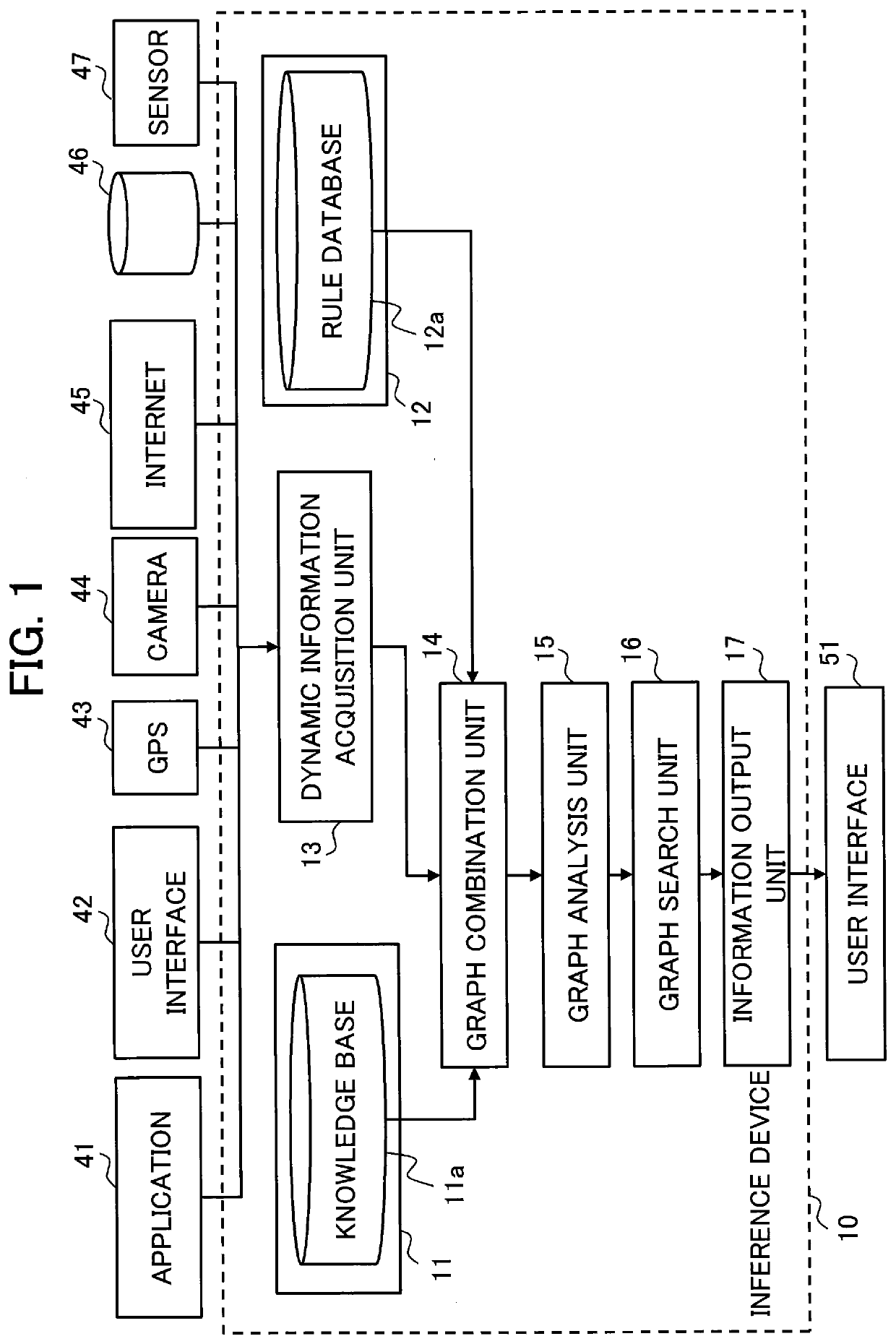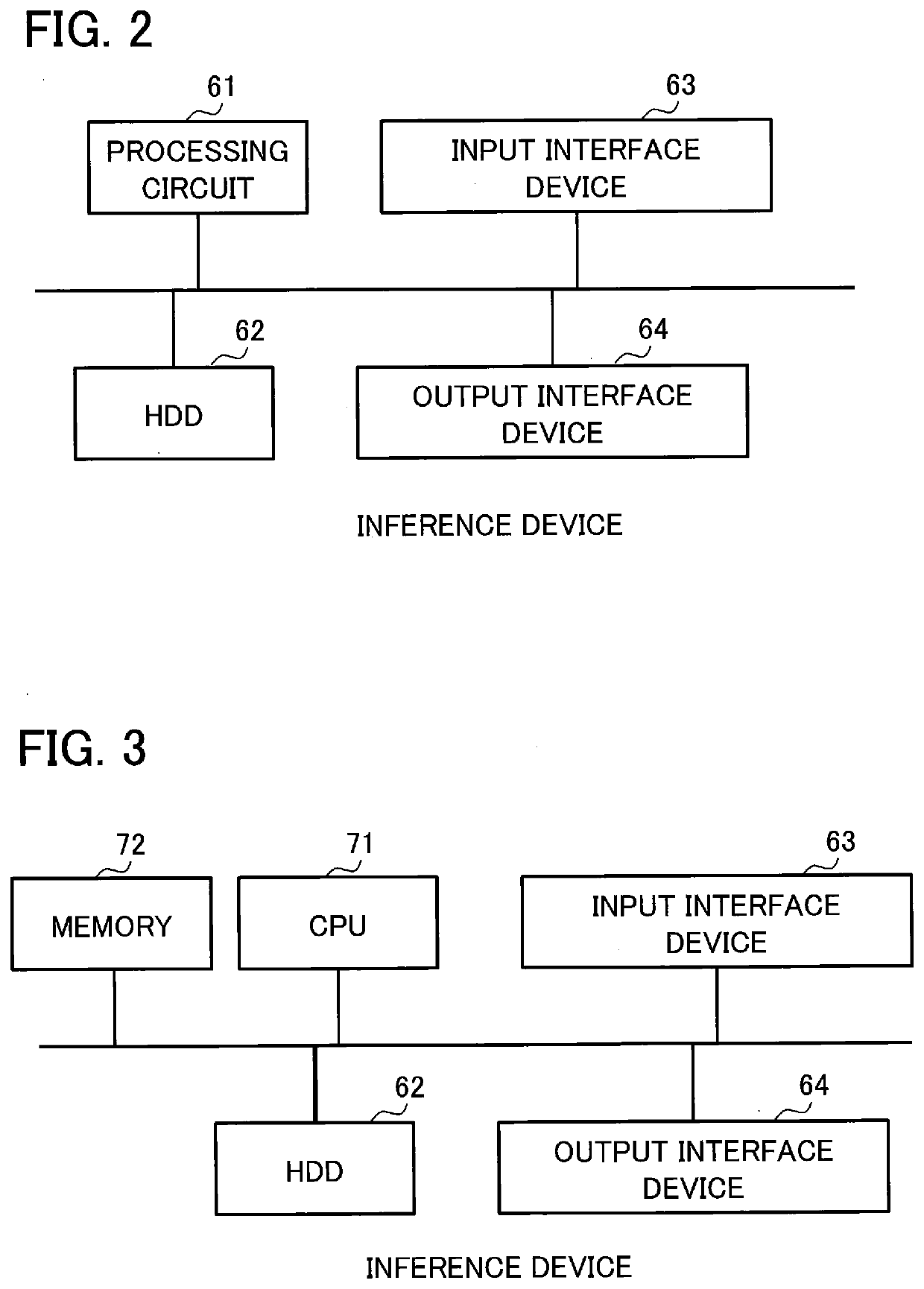Inference device, inference method, and inference program
a technology of inference device and inference method, applied in the field of inference device, inference method, inference program, etc., can solve problems such as difficulty in realizing dialog that is appreciated by humans
- Summary
- Abstract
- Description
- Claims
- Application Information
AI Technical Summary
Benefits of technology
Problems solved by technology
Method used
Image
Examples
first embodiment
(1) First Embodiment
(1-1) Configuration
[0049]An inference device according to a first embodiment integrates items of information respectively belonging to multiple domains different from each other by a method using graphs and thereby generates an integrated graph as the integrated information. Further, the inference device according to the first embodiment can include a configuration for deriving an inference result from the integrated graph as the integrated information. Here, the graph is a figure including an apex (i.e. node) and a side (i.e., edge) as components. A method for deriving the inference result is, for example, a graph analysis method not needing learning data. The graphs are classified mainly into directed graphs and non-directed graphs. The directed graph is formed with an apex and a side having a direction (i.e., arrow). The non-directed graph is formed with an apex and a side having no direction. The non-directed graph is equivalent to a bidirectional graph forme...
second embodiment
(2) Second Embodiment
(2-1) Configuration
[0251]In the inference device 10 and the inference method according to the first embodiment, information acquired from the outside, information detected by a sensor, or the like is set as an “observation node” as an important node that serves as the starting point of an inference, the observation vector is obtained from the observation nodes, and the inference result is calculated based on the obtained observation vector. In contrast, in an inference device and an inference method according to a second embodiment, an inference result adapted to each user is calculated by updating the observation vector based on history records of the user's operations and calculating the importance level vector based on the updated observation vector.
[0252]FIG. 17 is a functional block diagram schematically showing a configuration of an inference device 20 according to the second embodiment. In FIG. 17, each component identical or corresponding to a component ...
third embodiment
(3) Third Embodiment
(3-1) Configuration
[0291]When the inference device 10 and the inference method according to the first embodiment are used, there are cases where the user wants to know the reason for the result of the inference, that is, the reason why the recommendation was made. For example, in the dialog example shown in Table 1, when the artificial intelligence agent including the inference device 10 uttered “There is a restaurant serving cold ramen near here.”, the user can ask back the reason for the recommendation, like “Why did you recommend cold ramen?”. In this case, the artificial intelligence agent is required to explain to the user the reason why the recommendation is “cold ramen”. In a third embodiment, a description will be given of an inference device 30 having a function of explaining the reason for the recommendation to the user and an inference method for executing such a function.
[0292]FIG. 20 is a functional block diagram schematically showing a configuration...
PUM
 Login to View More
Login to View More Abstract
Description
Claims
Application Information
 Login to View More
Login to View More - R&D
- Intellectual Property
- Life Sciences
- Materials
- Tech Scout
- Unparalleled Data Quality
- Higher Quality Content
- 60% Fewer Hallucinations
Browse by: Latest US Patents, China's latest patents, Technical Efficacy Thesaurus, Application Domain, Technology Topic, Popular Technical Reports.
© 2025 PatSnap. All rights reserved.Legal|Privacy policy|Modern Slavery Act Transparency Statement|Sitemap|About US| Contact US: help@patsnap.com



